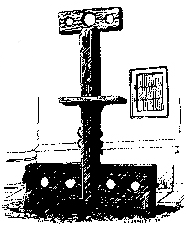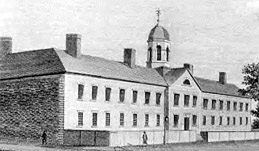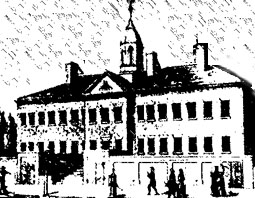|
On the Penitentiary System in the United States and Its Application in France By Gustave de Beaumont & Alexis de Tocqueville [Religious inspiration, isolation's failure, silence's success]
It was then that the Walnut Street prison was established in Philadelphia. Here the convicts were classed according to the nature of their crimes, and separate cells were constructed for those whom the courts of justice had sentenced to absolute isolation. These cells also served to curb the resistance of individuals, unwilling to submit to the discipline of the prison. The solitary prisoners did not work. This innovation was good but incomplete. . . . The true merit of its founders was the abolition of the sanguinary laws of Pennsylvania, and by introducing a new system of imprisonment, the direction of public attention to this important point. Unfortunately that which in this innovation deserved praise, was not immediately distinguished from that which was untenable. . . . Nowhere was this system of imprisonment crowned with the hoped-for success. . . however instead of accusing the theory itself, its execution was attacked. It was believed that the whole evil resulted from the paucity of cells, and the crowding of the prisoners; and that the system . . . would be fertile in happy results, if some new buildings were added to the prisons already existing. . . . Such was the origin of the Auburn prison [1816].
This prison, which has become so celebrated since, was at first founded upon a plan essentially erroneous. It limited itself to some classifications, and each of these cells was destined to receive two convicts: it was of all combinations the most unfortunate; it would have been better to throw together fifty criminals in the same room, than to separate them two by two. This inconvenience was soon felt, and in 1819 the Legislature of the State of New York, ordered the erection of a new building at Auburn (the northern wing) in order to increase the number of solitary cells. . . . The northern wing having been nearly finished in 1821, eighty prisoners were placed there, and a separate cell was given to each. This trial, from which so happy a result had been anticipated, was fatal to the greater part of the convicts. In order to reform them, they had been submitted to complete isolation; but this absolute solitude, if nothing interrupts it, is beyond the strength of man; it destroys the criminal without intermission and without pity; it does not reform, it kills. The unfortunates, on whom this experiment was made, fell into a state of depression, so manifest, that their keepers were struck with it; their lives seemed in danger, if they remained longer in this situation; five of them, had already succumbed during a single year; their moral state was not less alarming; one of them had become insane; another, in a fit of despair, had embraced the opportunity when the keeper brought him something, to precipitate himself from his cell, running the almost certain chance of a mortal fall. Upon similar effects the system was finally judged. The Governor of the State of New York pardoned twenty-six of those in solitary confinement; the others to whom this favor was not extended, were allowed to leave the cells during day, and to work in the common workshops of the prison. From this period, (1823) the system of unmodified isolation ceased entirely to be practiced at Auburn. Proofs were soon afforded that this system, fatal to the health of the criminals, was likewise inefficient in producing their reform. Of twenty-six convicts, pardoned by the governor, fourteen returned a short time after into the prison, in consequence of new offenses.
This experiment, so fatal to those who were selected to undergo it, was of a nature to endanger the success of the penitentiary system altogether. After the melancholy effects of isolation, it was to be feared that the whole principle would be rejected: it would have been a natural reaction. The Americans were wiser: the idea was not given up, that the solitude, which causes the criminal to reflect, exercises a beneficial influence; and the problem was, to find the means by which the evil effect of total solitude could be avoided without giving up its advantages. It was believed that this end could be attained, by leaving the convicts in their cells during night, and by making them work during the day, in the common workshops, obliging them at the same time to observe absolute silence. Messrs. Allen, Hopkins, and Tibbits, who, in 1824, were directed by the Legislature of New York to inspect the Auburn prison, found this new discipline established in that prison. They praised it much in their report, and the Legislature sanctioned this new system by its formal approbation. |



